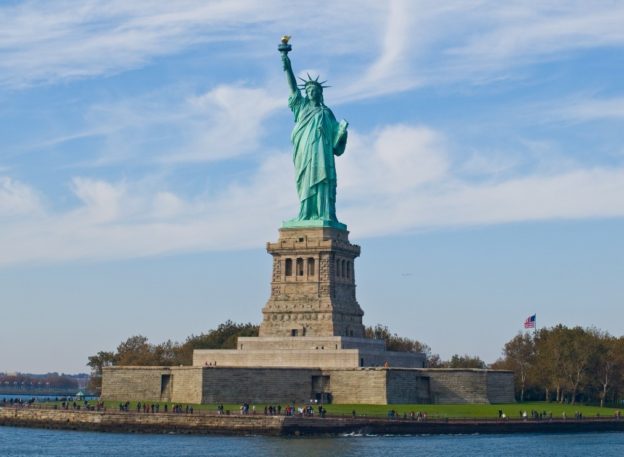In college I came to appreciate a few things. First, to have a profound respect for the life of the mind; second, try to live a meaningful life; third, to love college football. Since I went to Notre Dame, football was in the DNA of the place and it was great fun to watch with the dueling mascots, colorful team uniforms, cheerleaders, marching bands, tailgate parties, the fight songs after every score and beer fueled student sections willing a home team victory. The NFL, try as it may, can never replicate the pageantry of a college football game.
Joan Didion once wrote: “time passes, memory fades, memory adjusts, memory conforms to what we think we remember.” While this is often the case, I have one football memory that has never “faded,” “adjusted” or “conformed” because it really happened.
My classmate and friend Dave Martin was a starting linebacker on the 1966 Notre Dame National Championship team. The Southern California game, Notre Dame’s most heated rivalry, was being played on Thanksgiving weekend in the Los Angeles Coliseum. I was listening to the radio report of the game (the game was not on TV because, the week before, #1 Notre Dame had played #2 Michigan State to a nationally televised 10-10 tie in East Lansing, Michigan and, in those days, a team only appeared on national TV once a year during the regular season). Then, I heard the announcer say that the ball has been intercepted by Dave Martin and that he has returned it for a touchdown. And when I heard that, I started screaming at the radio, to myself and to an empty room: “I know that guy!” Indescribable joy, as if I, not Dave, had scored the touchdown.
So what happens when a game that you love is turned upside down? Because that is exactly what has happened.
William F. Tate, IV was hired in 2021 to be President of Louisiana State University (LSU). He received an employment contract of $725,000 a year plus a housing and car allowance totaling $50,000. He is responsible for multiple campuses (total of 8), a law school, a medical school, a veterinary school and the flagship campus in Baton Rouge. LSU faculty and staff number almost 5,000 and the student population is over 34,000.
Also in 2021, Brian Kelly was hired as head football coach at LSU and he is receiving a base salary of $9 million plus “bonuses” of at least $1 million per year (a “longevity” bonus of $500,000 each July and another $500,000 if LSU plays in a bowl game, a near certainty). He is also receiving car allowances ($24K a year) and an interest free housing loan up to $1.2 million.
The president of Michigan State University makes $720,000 a year. He is responsible for 13,000 faculty and staff employees and 50,000 students.
Mel Tucker, the successful second year coach of the Michigan State football team, was just rewarded with a $9.5 million a year contract for the next 10 years. Like the coach at LSU, he is probably responsible for the supervision of about 100 student athletes and maybe 200 support staff.
The 10th highest paid college football coach in 2021 was Kirby Smart of Georgia who made slightly more than $7 million with a bonus of not less than $850,000, which he undoubtedly collected when his team won the national title a few weeks ago. It’s almost a sure thing that Kirby’s salary next year will approach the $10 million level. The president of the University of Georgia which educates 30,000 students makes less than 10% of Coach Smart’s salary.
The University of Southern California just awarded a $10 million a year contract to its new football coach, Lincoln Riley who, until a few weeks ago, was the football coach at the University of Oklahoma. Riley’s “package,” according to published articles, includes a $6 million home in Los Angeles and a private jet for his family’s use. The Southern California Athletic Department tweeted “we got our man” but it surely seems that their “man” also got them.
The top 10 college coaches make more money than all but three of the NFL coaches and the highest paid college coaches when all “perks” and “bonuses” are counted (Nike, Under Armor, Aflac commercials) likely make more than any NFL coach. You have to give it to the lawyer who coined the term “longevity bonus” to award someone $500K per year when he actually honors his 10 year contract.
How do we get to the state of affairs where the football team is more important than the university’s mission? It was a long time coming but may have been jump started in 1991 when NBC entered into a contract with Notre Dame to broadcast all of the Fighting Irish home games. The college football world was stunned by this contract which has now been extended until 2025. And then the arms race began. Now we have a Big 10 television network, the SEC television network, and repeated reconfigurations of teams and conferences in order to enhance television coverage. As the money rolled in, the first pig at the trough was the football coach who argued that his enterprise was reaping untold dollars for the school. In most cases, the school acquiesced. Oddly enough, Notre Dame ‒ which may have started it all ‒ was “only” paying Coach Kelly a little less than $2 million a year which he parlayed into $10 million a year at LSU.
In 1996, teams played a 10 game regular season schedule and there were a total of 8 bowl games in Division 1 football. In 2021, teams played 12 games in the regular season and there were 43 bowl games.
So is this just an old man reminiscing about the good old days? Maybe so but I think football has become the tail wagging the university dog and that’s not right.
There is one other thing I know. On one magical Saturday in November of 1966, Dave Martin and I scored a touchdown against Southern Cal.












